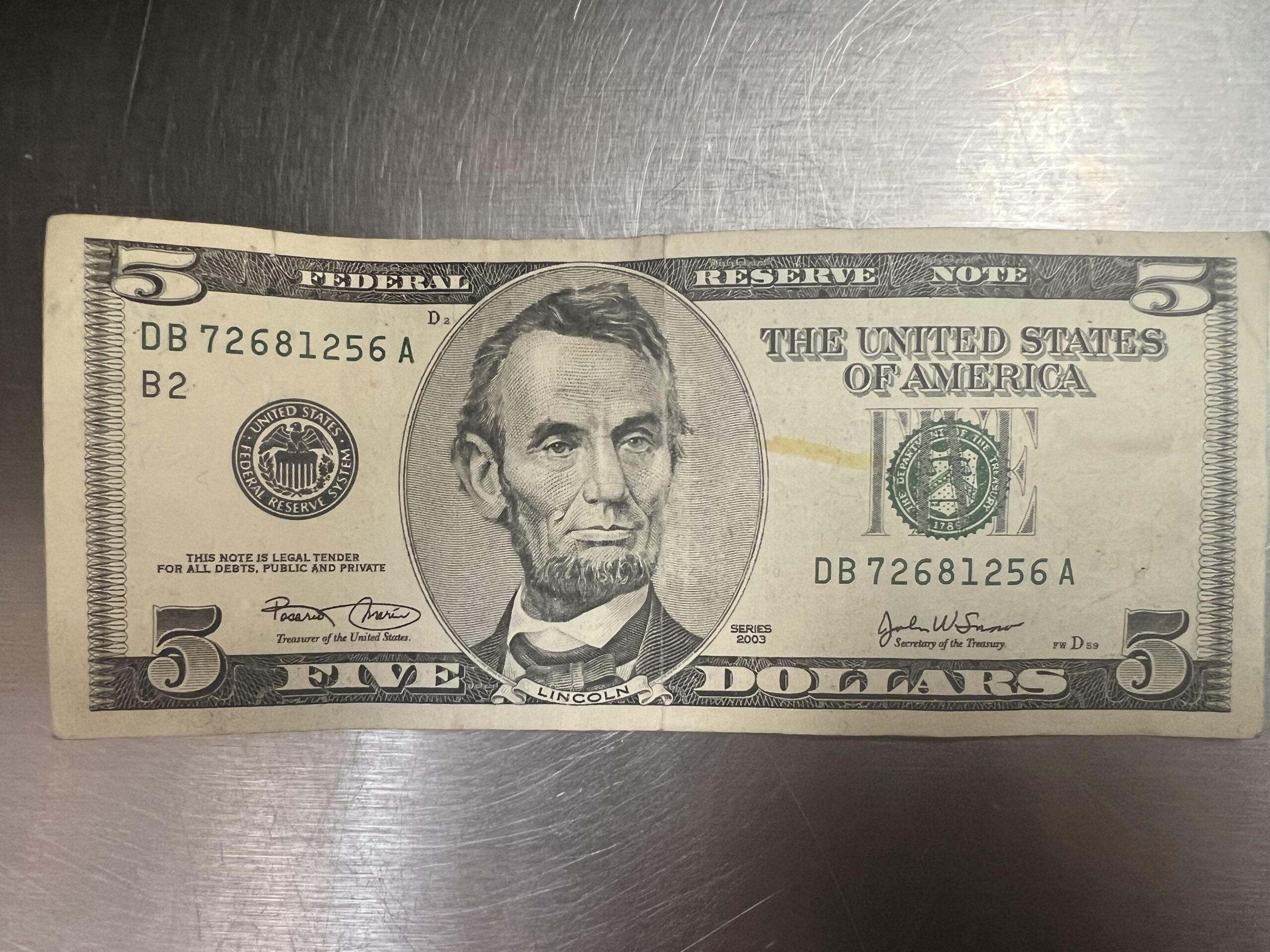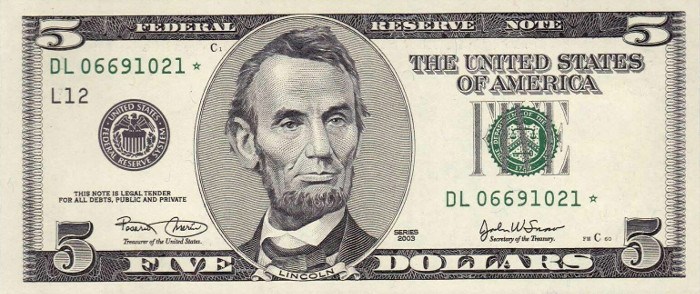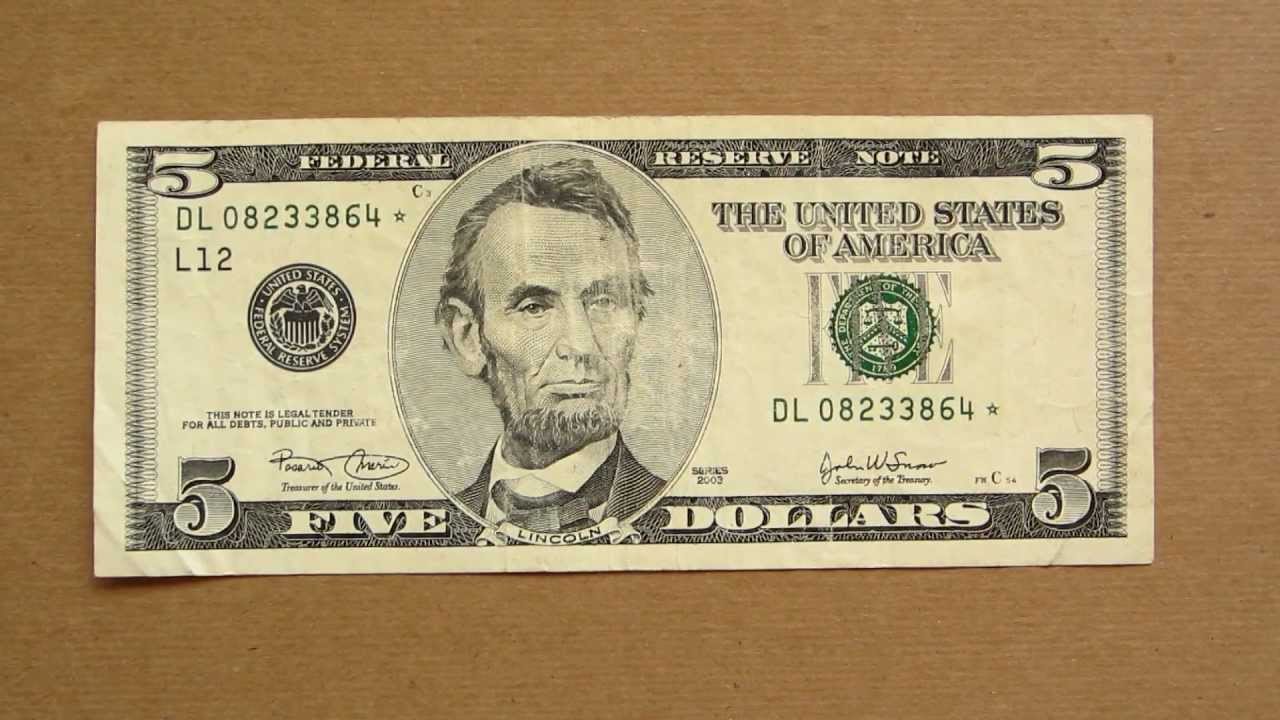When collectors and currency enthusiasts dive into the world of U.S. money, one common question often arises: “What is the value of a 2003 5 dollar bill?” This inquiry is essential for those who have stumbled upon a 2003 five dollar bill (also known as a $5 bill or five dollar note) and are eager to determine its worth in the modern marketplace. The 2003 $5 bill holds particular interest for collectors due to its historical significance, unique characteristics, and potential rarity.
Uncirculated note or an error-filled specimen, knowing the value of these bills can help you decide whether to keep them or sell them.
Overview Of The 2003 5 Dollar Bill
The 2003 5 dollar bill was issued as part of the larger series of Federal Reserve Notes (FRNs) that were printed for U.S. currency circulation. Like other notes in this series, the 2003 $5 bill has several features that make it stand out.

The bill prominently features a portrait of Abraham Lincoln, one of the most famous figures in U.S. history, and is printed on a special type of paper designed for U.S. currency.
The design of the 2003 five dollar bill features a green seal, marking it as a Federal Reserve Note. Each bill was printed with the signatures of U.S. Treasury Secretary John Snow and U.S. Treasurer Rosario Marin.
These signatures were part of the changes that distinguished this series from earlier and later ones. The 2003 series of $5 bills was printed in both Washington D.C. and Fort Worth, Texas, where the Bureau of Engraving and Printing (BEP) operated the presses.
The Value Of A 2003 Five Dollar Bill
The value of a 2003 $5 bill is primarily determined by several factors, including its condition, rarity, and any potential errors it may contain. It is important to consider these elements when evaluating the worth of your bill.
Condition Of The Bill
As with most collectible currency, the condition of the bill plays a significant role in determining its value. Circulated bills—those that have been in active circulation—typically hold no more value than their face value, which is $5.
However, when a five dollar bill is uncirculated and in mint condition, it can command a premium.
For instance, uncirculated 2003 $5 bills are worth around $15 if graded as MS 63, which stands for “choice uncirculated.” This grading means the bill shows no signs of wear or damage, and its crispness and sharp edges are intact.
Bills that are graded lower or have creases or wrinkles will be valued much closer to their face value.
Star Notes: A Special Variant of the 2003 $5 Bill
A particularly fascinating aspect of the 2003 $5 bill is the potential presence of Star Notes. Star notes are a special type of note that replaces a defective bill. If a $5 bill is found to be damaged or unfit for circulation, it is replaced by a Star Note, which bears a star symbol at the end of the serial number.
Star notes are generally more rare than regular notes, making them more valuable to collectors. For example, a 2003 $5 Star Note can be worth anywhere from $30 to $45, depending on its condition and where it was issued.
Star notes from certain Federal Reserve Banks, such as the one from Philadelphia, can fetch higher prices. The value of a Star Note increases significantly when it is in uncirculated condition with a grade of MS 63.
Error Notes: Additional Value for the 2003 Five Dollar Bill
Another factor that may increase the value of a $5 bill is the presence of errors. Sometimes, bills are printed with minor mistakes that make them unique and valuable to collectors.
Common errors in currency printing can include things like misaligned printing, ink smudges, or missing elements. While these errors are often subtle, they can make a bill more desirable, especially to currency collectors who are on the lookout for rare finds.
An error note from the 2003 series could increase the worth of your five dollar bill substantially, depending on the rarity and severity of the error.
The Value of 2003 5 Dollar Bill: What Can You Expect?
So, what exactly can you expect in terms of the worth of a 2003 five dollar bill? The general rule is that most of these bills, especially those in circulated condition, are worth exactly $5. However, as mentioned earlier, the value can rise depending on various circumstances.

Uncirculated Condition
If you happen to have an uncirculated 5 dollar bill, it may be worth $15 in the marketplace. This holds true for both the 2003 and 2003A series of five dollar notes when they are graded at MS 63.
While this is still not a dramatic increase over face value, it does signify a higher premium for collectors.
Star Notes
As previously discussed, Star Notes from the 2003 $5 bill series can be worth more money. Depending on the specific Federal Reserve Bank from which they were issued, Star Notes can range from $30 to $45 in uncirculated condition.
Those from the Philadelphia Federal Reserve Bank or the New York Federal Reserve Bank often carry a slightly higher value than Star Notes from other regions.
Error Notes
If your 2003 5 dollar bill happens to have an error, it can greatly increase in value. Depending on the type and severity of the error, the bill could be worth considerably more than its face value.
If you suspect that your bill might contain an error, it is advisable to consult with a professional currency dealer or appraiser to confirm its value.
How to Sell Your 2003 5 Dollar Bill
If you happen to have a 2003 $5 bill in uncirculated condition, a Star Note, or a bill with a potential error, you may be wondering how to sell it for the best price. There are several ways to sell your five dollar bill, including:
- Online Marketplaces: Websites like eBay and Etsy often have currency collectors searching for specific bills. Selling your bill on these platforms can help you find buyers willing to pay more than face value, especially for rare and error notes.
- Currency Dealers: Professional currency dealers or numismatic stores often buy and sell notes and coins. These dealers can provide appraisals and may offer to buy your bill at a fair market price.
- Currency Auctions: If you have a particularly rare or valuable bill, you may want to consider auctioning it off. Auction houses that specialize in currency can help you find the right buyer for rare Star Notes or error notes.
Conclusion: The 2003 5 Dollar Bill and Its Value
While the 2003 5 dollar bill may not have a sky-high value for most people, certain factors like Star Notes, uncirculated condition, and potential error notes can significantly increase the worth of this currency. By understanding how grading works and what makes a 2003 $5 bill unique, you can determine whether your bill is simply a 5 dollar bill or a rare collector’s item.
Simply curious about your currency’s worth or are looking to sell a rare note, it’s essential to keep in mind that a 2003 five dollar bill can be much more than just a note for everyday transactions.
By taking good care of it and identifying any distinctive features, you can maximize its value and potentially turn a small profit from your collection.
So, the next time you come across a 2003 5 dollar bill, be sure to check if it’s a Star Note, contains any errors, or is in uncirculated condition—all of which could make it worth much more than its face value.

